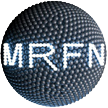The Center (UMASS-MSC) provides state-of-the-art analytical equipment, analytical services and expertise in mass spectrometry for UMass-Amherst, neighboring scientific communities and their collaborators. Currently, UMASS-MSC serves the needs of more than 30 groups with active life science research interests by facilitating a) development of new organic/inorganic synthetic materials; b) analysis of variety of post-translational modifications in proteins, including biopharmaceuticals; c) quantitative comparative analysis of protein levels; d) fundamental studies in protein/protein and protein/ligand interaction research areas etc., owing to its expanding capabilities in modern methods of mass spectrometry.
UMASS-MSC is also actively used within the framework of the NIH-funded Chemistry-Biology Interface (CBI) program (5T32 GM008515-15). Nineteen training faculty of the CBI program are users of the Facility’s instrumentation.
UMASS-MSC houses hybrid Quadrupole Time-of-Flight (Applied Biosystems QStar-XL), Double-Focusing Magnetic Sector (JEOL-700 MStation), Fourier-Transform Ion-Cyclotron Resonance (Bruker's SolariX 7T FT-ICR), Matrix-Assisted Laser Desorption Ionization (Bruker's MALDI-OmnifleX), Bruker Esquire-LC Ion Trap mass-spectrometers and several HPLC, including Ultimate Nano-LC Packings, and GC Systems.





